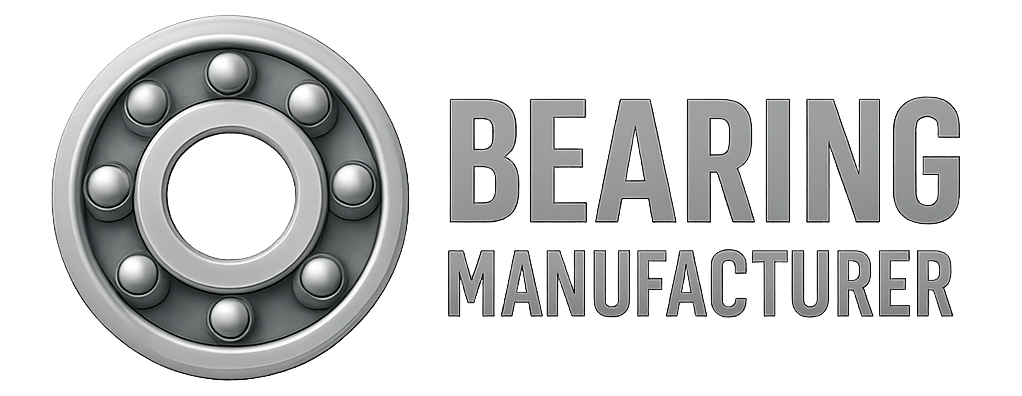Bearings may seem small, but they play a pivotal role in supporting motion, reducing friction, and absorbing forces in rotating equipment. At the core of bearing performance lies load—the magnitude and direction of force applied to the bearing under real-world conditions. Understanding how different types of loads affect bearing behavior is crucial for equipment reliability, safety, and operational efficiency.
This guide explains key bearing load types, their impact on performance, and how to select bearings based on your application’s load requirements.
What Is a Bearing Load?
A bearing load refers to the mechanical force exerted on a bearing during operation. It is transmitted from the machine shaft to the inner ring of the bearing, through the rolling elements (balls or rollers), and finally to the outer ring. The nature of this load—its type, magnitude, and direction—determines the bearing’s suitability for a specific application.
Common Load Influencing Factors:
-
Equipment weight
-
Rotational speed and acceleration
-
Shock and vibration
-
Temperature and lubrication
-
Misalignment and installation quality
Bearings are generally designed to withstand three major load types: radial, axial (thrust), and centrifugal. Each affects performance differently and requires specific bearing characteristics.
Radial Loads: Perpendicular to Shaft
Radial loads act perpendicular to the shaft’s axis, applying force on the bearing’s outer ring. These are the most common in horizontal applications, such as motors, gear drives, and conveyors.
Common Sources:
-
Shaft assembly weight
-
Gears or belt drive systems
-
Rotating tools or impellers
Suitable Bearings:
| Load Level | Bearing Type |
|---|---|
| Light to Moderate | Deep groove ball bearings |
| Heavy | Cylindrical roller bearings, angular contact bearings (low contact angle) |
Radial Load Calculation Tip:
Use manufacturer specs to verify your design load is below the dynamic load rating (C). Factor in the load distribution across multiple bearings.
Axial Loads: Parallel to Shaft
Axial loads, or thrust loads, act along the shaft axis and apply pressure either inward or outward depending on the application. These are common in vertical arrangements or where pushing/pulling forces exist.
Typical Sources:
-
Hydraulic pressure
-
Helical gears
-
Propeller thrust or screw drive tension
Suitable Bearings:
| Application | Bearing Type |
|---|---|
| Unidirectional thrust | Angular contact bearings (high contact angle ~25°) |
| High axial loads | Thrust ball bearings, tapered roller bearings |
Important Note:
In cases of offset axial loading, uneven force distribution can reduce bearing life. Precision alignment and correct preload are critical.
Combined Loads: Simultaneous Radial & Axial Forces
Most real-world applications expose bearings to combined loads, where radial and axial forces act simultaneously. This dynamic condition requires robust bearing designs that can handle multi-directional stress.
Suitable Bearings:
-
Tapered roller bearings
-
Spherical roller bearings (for misalignment scenarios)
Applications: Gearboxes, automotive hubs, electric motors, pumps
Benefits of Proper Combined Load Bearing:
-
Greater reliability
-
Longer operational life
-
Lower maintenance cost
Centrifugal Loads: High-Speed Stress
Centrifugal loads emerge at high rotational speeds due to inertia acting on the rolling elements. This radial force increases with speed and can significantly affect bearing performance and limit maximum RPM.
Common Use Cases:
-
Turbines
-
Centrifuges
-
High-speed motors
Recommended Bearings:
-
Hybrid ceramic bearings (for lower mass and higher speeds)
-
Precision deep groove or angular contact bearings (with speed rating confirmation)
Centrifugal Load Formula:
Centrifugal Load Capacity = (C₀ / P) × V² × 10⁻⁹
Where:
-
C₀ = basic static load rating
-
P = dynamic equivalent load
-
V = rotational speed (rpm)
Bearing Load Calculations & Life Prediction
Accurate load analysis is fundamental for bearing selection and service life estimation. Use tools like manufacturer catalogs, engineering calculators, or FEA simulations.
Key Equations:
Radial Load Life (L10)
L10 = (C / P)³ × 10⁶ revolutions
Where:
-
C = dynamic load rating
-
P = equivalent dynamic bearing load
Observation: Even slight increases in P significantly reduce bearing life.
Bearing Load Selection Table
| Load Type | Direction vs Shaft | Common Source | Recommended Bearings |
|---|---|---|---|
| Radial | Perpendicular | Shaft weight, belt tension | Deep groove ball, cylindrical roller |
| Axial | Parallel | Thrust, end loads | Angular contact, thrust ball, tapered roller |
| Centrifugal | Radial (from rotation) | High-speed rotation | High-speed, hybrid ceramic bearings |
| Combined | Multi-directional | Motors, gearboxes | Angular contact, tapered roller, spherical roller |
Final Tips for Bearing Selection
When selecting a bearing, consider:
-
Load direction and magnitude
-
Operating speed and temperature
-
Lubrication conditions
-
Installation and alignment tolerances
Consult application engineers or bearing specialists when dealing with high-load, high-speed, or critical equipment. Matching bearing load ratings to real-world conditions ensures better uptime, performance, and safety.
